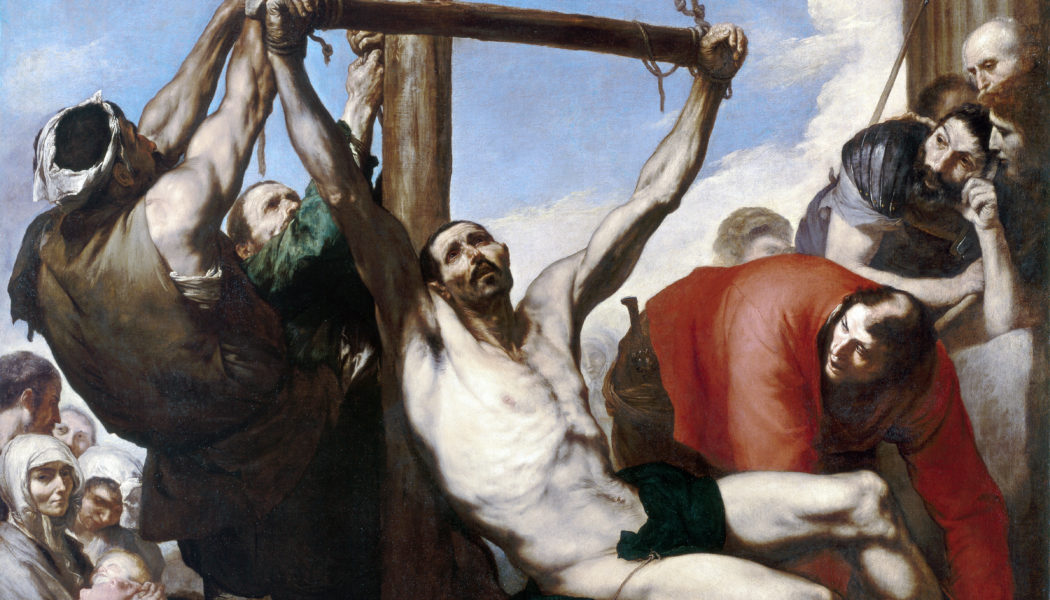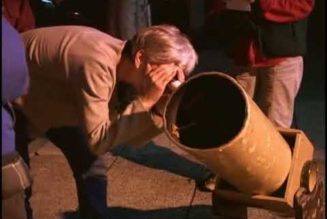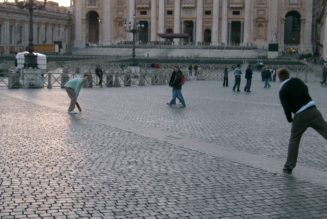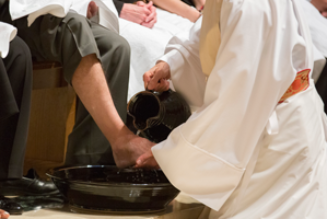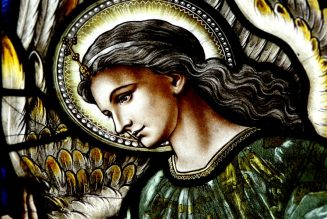As previously noted, we can divide the Twelve Apostles into three categories: those about whom we know a lot (think Peter, James the Greater, John, to some degree Andrew); those about whom we only know their names (think Simon, Jude); and those who are occasionally mentioned, without robust detail (think Bartholomew). Philip and James the Lesser fit into that third box, rather on the less-known end of the scale.
St. Philip
What do we know about St. Philip? He’s listed among the Apostles. He puts in three appearances in John’s Gospel:
- Faced with a crowd, Jesus asks Philip (“to test him”): “Where can we buy enough food for them to eat?” Philip’s response is that 200 days’ wages would provide each but a meager ration (John 6:5-7).
- After Jesus’ triumphal Palm Sunday entry into Jerusalem, some Greeks approach Philip (“who was from Bethsaida in Galilee”) wanting to see Jesus. Philip takes their request to Andrew, and the two of them go to Jesus to convey the request (John 12:20-22).
- At the Last Supper, after Jesus speaks of knowing and seeing the Father, Philip asks, “Show us the Father and that will be enough for us,” to which Jesus replies, “whoever has seen me has seen the Father” and “I am in the Father and the Father is in me …” (John 14:7-14).
Philip also is mentioned as one of the Apostles who returned from the Ascension of the Lord to await the coming of the Holy Spirit in Jerusalem (Acts 1:13).
That’s it.
When I was a junior faculty member, I once reflected on how much work went into what became one line in the annual evaluation report. It made me think of an encyclopedia entry: even men who have changed the course of history usually have their lives summarized in a quarter of a page.
We all labor to be noticed, and the Apostles were no different: the Gospels are replete with reports of their jockeying for “who’s on first.” For all his labors following Christ and spreading the Gospel — including eventual martyrdom — Philip is remembered in the Gospels for (a) being there and (b) being a foil whose questions allow Jesus to expound on his teaching or perform a miracle.
Does that make Philip any lesser? No. The Catholic Encyclopedia summarizes him as somewhat literal, simple and “sober,” but Jesus is soaring theologically (especially in John’s Gospel) while Philip is just learning to run. What we should learn from the episode is the importance and significance of each moment of our lives: would Philip have thought that, 20 centuries in the future, people would quote him on the price of bread? No, but it let Jesus speak about a bread by which alone man lives. And it also allowed Jesus to show the Christian that God’s lavish charity exceeds the possibilities of human catering on a budget … a lesson that needs to be heard in every age.
Much of the rest of what we know about St. Philip comes from tradition or even legend. It doesn’t help that, when in next Sunday’s First Reading we hear about the first deacons, one of them is named Philip (Acts 6:5). Some scholars think that the subsequent fates of Philip the Apostle and Deacon Philip might have gotten blurred. That said, tradition affirms that St. Philip died a martyr’s death by crucifixion, probably at Hierapolis, a city in Phrygia, now southwest Turkey.
St. Philip has been the subject of a fair amount of artistic interest. The 15th-century Florentine artist Filippino Lippi was commissioned to decorate the Strozzi Chapel in Santa Maria Novella with accounts of the life of Philip. Artists who painted the entire apostolic college, like Rubens, obviously included Philip. But the best known painting of St. Philip was by Spanish Baroque artist Jusepe de Ribera. “Martirio de San Felipe” (The Martyrdom of St. Philip), an oil painting, dates from 1639 and hangs in the Prado in Madrid (see painting below).
As is typical of Baroque painting, figures are larger than life (though not as large as in Rubens) and muscularly developed. We can see from the pull of the crossbeam how crucifixion affects the upper body. Again, our images of Christ’s crucifixion sometimes cause us to see all crucifixions through that lens.
Crucifixion was commonplace in the ancient world and executioners were often practiced in the art. After being securely set up, the vertical beam was often left in place. The executed was often hoisted on the patibulum, or crossbeam, after having been tied or nailed to it. We see that moment about to happen, as two men pull the beam up while a third seeks to boost Philip’s legs, which will be subsequently tied or nailed. Men on the right observe the process. Others happen to be passing by, indifferent to the killing of a man. One commentator suggests the woman with child in the bottom left, who looks at us, is an “allegory of Christian charity” amidst that hate or indifference. Perhaps she is a Madonna with Child, who attended her own cross. St. Philip is being hoisted into a blue sky in which the clouds are breaking, pointing to heaven where the martyr is bound.
St. James the Less
The Church honors St. Philip along with St. James the Lesser (as compared to St. James the Greater, brother of John and son of Zebedee, the appellations perhaps referring to their stature or, some suggest, their “seniority”). This James is often called “the brother of the Lord.” Without getting into the long discussions of what that means (or how some Protestant theologians, interested in denying Mary’s perpetual virginity, seek to read the term as literal brotherhood), suffice it to say that the Western Latin tradition has recognized in the term extended family, e.g., cousins.
(That’s true even today: contrary to the atomized nuclearization of the American family, cousins in other cultures are considered close kin. In Polish, for example, the word for male first cousin is brat cioteczny or brat stryjeczny (“aunt-ish or uncle-ish brother, depending on whether the cousin’s mother/father is related to your mother/father).
While some have tried to contest the identity of James “the brother of the Lord” with the Apostle named in apostolic lists as “James, the son of Alpheus,” Catholic tradition has held them to be the same. James the Lesser was first bishop of Jerusalem, an important see given that Christianity came out of a Jewish cradle. Catholic tradition also regarded him as author of the eponymous “catholic” epistle.
(The New Testament has seven “catholic” epistles, so-called not because they are unique to Catholicism — though Luther didn’t like James — but because, in contrast to Paul’s which are directed to specific communities, e.g., Romans, Corinthians, Galatians, the “catholic” or “universal” apostles do not mention particular target communities by name.)
By tradition, James the Lesser was a fuller. Fullers were people who treated lamb’s wool, taking the rough material sheared off the beast and turning it into the soft product people wear. It was a hard job which, in its ancient forms, involved processes like soaking the shear in urine to make it less stiff and then beating or combing it to make it malleable for the tailor or weaver. Tradition holds that James the Lesser was clubbed to death, perhaps using a fuller’s club. We know that, apart from preaching, St. Paul also kept up his trade as a tentmaker to maintain himself (Acts 20:33-34), so it would not be out of order for James to have done likewise.
Rubens’ portrait of St. James the Lesser, also in the Prado (see painting above), relies — like most of his apostolic series — on assigning to a particular apostle attributes associated with his martyrdom. In this case, James holds what looks like a wooden square. I would have expected a club, but this device was probably also part of the wool combing process. Did they kill him with his own tools?
(To read more on St. Philip, see here; on St. James the Lesser, here.)

